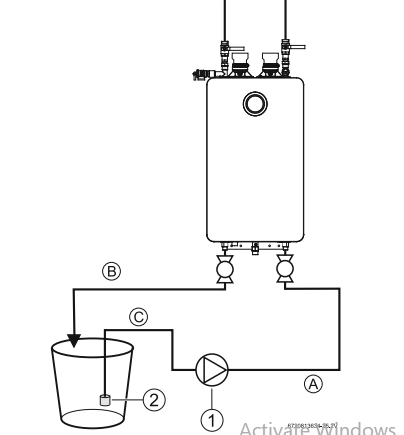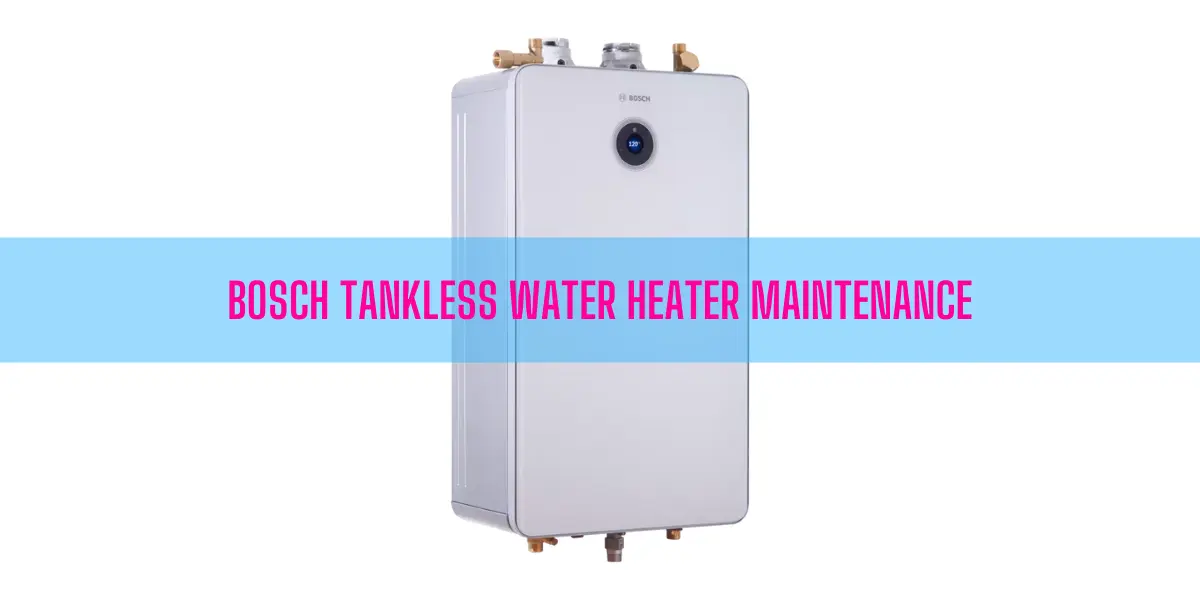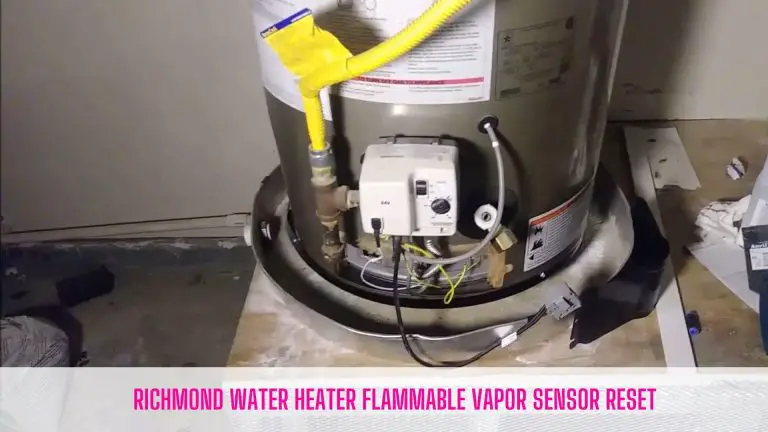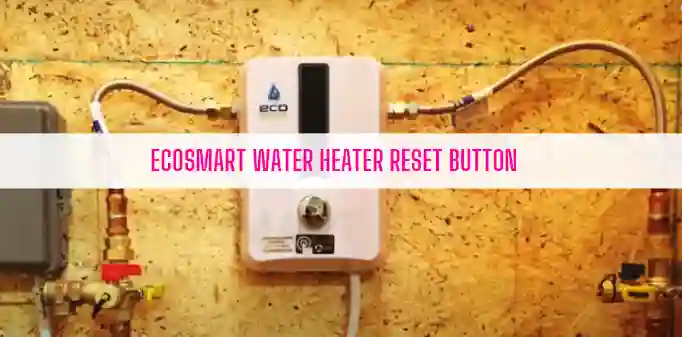Bosch Tankless Water Heater Maintenance [The Complete Guide]
This is a complete guide on Bosch Tankless Water Heater Maintenance.
From this guide, what you are going to explore:
- How often do you need to perform the maintenance workflow (Required Annual Maintenance)?
- The procedure or step-by-step guide of maintaining your Bosch Tankless Water Heater
- And a lot.
In short, you will learn everything you need to know to take care of your water heater. It doesn’t only help you to increase the longevity of the unit but also maintain its peak performance.
So, let’s jump in without any further ado.
Table of Contents
- Required Annual Maintenance Table
- Bosch Tankless Water Heater Maintenance [The Procedure]
- How Do I Descale My Bosch Tankless Water Heater?
- Bonus Tips: Winterizing the Unit For Seasonal Use
- FAQs
- End-Note
Required Annual Maintenance Table
You must perform the maintenance workflow annually to maintain the peak performance of the water heater. It will help you get the best output from the unit and boost up the longevity.
And this table will help you determine how often you need to clean the tankless unit per year:
| What To Inspect | Every Year |
| 1. Inspect Venting System | X |
| 2. Inspect Heat Exchanger | X |
| 3. Inspect Burner | X |
| 4. Inspect Pressure Relief | X |
| 5. Inspect Water Filter | X |
| 6. Heat Exchanger (Descaling) | X2 |
| 7. Inspect Condensate Trap | X |
| 8. Inspect Air Filter | X |
Bosch Tankless Water Heater Maintenance [The Procedure]
Maintenance workflow must be performed by a professional- it’s recommended. However, you can easily avoid the risks associated with the maintenance task.
For example, always shut off the electric supply to the unit and turn off the manual shut-off gas valve before servicing the unit. Of course, don’t forget to close the water valves.
Once you take those precautions, it requires you to remove the front cover. To remove the front cover, what you need to do:
- Remove the Phillips head screws located on the bottom of the front cover.
- Open the front cover slowly.
- Detach the wiring from the HMI display and lift the front cover to take it out of the appliance.
After removing the front cover, go along with the step-by-step procedure to inspect and clean the water heater:
1. Inspect the Venting System and Remove The Blockage From It
Take a look inside the flue pipe and ensure there is no blockage in it. If there is any restriction, remove it.
If there is obstruction in the vent system, you will get insufficient air for proper combustion. Now, a question that can appear in mind is- Is there any indication that lets know about improper venting or a clogged vent system?
Fortunately, Yes.
Just observe the burner flames when operating the water heater. The burner flame should be consistent and blue- indicating a proper heater operation.
If the flame looks yellow and inconsistent, I bet it’s because of poor ventilation or a restricted venting.
So, check the air intake pipe and the air intake & exhaust terminations and verify there are no restrictions or debris.
2. Inspect the Heat Exchanger
Heat exchanger on a water heater is an important component you must take care of. It exchanges heat and warms the water. If the heat exchanger gets clogged or scale forms on it, it will start malfunctioning.
Depending on the water quality of your area, you should check it one or twice per year. If the hardness of water is excessively high, you should descale the heat exchanger every six months.
Inconsistent flame or spillage of gas flue gasses on the burner observation window will indicate about a malfunctioning heat exchanger.
In the “How Do I Descale My Bosch Tankless Water Heater” section, I will take you through the step-by-step guide to descale the water heater. Till then, keep scrolling.
3. Operate the Pressure Relief Valve Manually
Open the pressure relief valve manually to verify its proper operation. When operating it, ensure the discharge drains away safely. I highly recommend you to let a certified plumber open this valve for you.
4. Clearing Blockage From Inlet Water Filter
The inlet water filter should also be free of debris for proper water heater operation.
To clean the water inlet filter, first locate it on the unit. It’s located on the top of the water heater, at the cold water inlet connections.
Then, shut off the installer supplied water shut-off valve and discharge the water using the discharge drains.
Next, remove the brass hex cap that holds that inlet filter in place. Now, remove the filter and clean it under running water.
After cleaning the filter, replace it into its place and follow the steps in reverse to reinstall the water inlet filter.
5. Cleaning Condensate Trap
Verify the condensate siphon is free from dirt and debris. If needed, remove the blockage.
6. Air Filter Cleaning
It’s a must to inspect the air filter once a year. You should clean it or replace it in case it gets clogged or damaged.
To clean the air filter, disconnect the water heater from the electric connection. Then, remove the front cover and take out the cover from the air filter.
Next, remove the two Phillips head screws that keep the air filter in place. Now, remove the air filter and clean it. If needed, replace the air filter.
Finally, follow the steps in reverse to reassemble the air filter.
How Do I Descale My Bosch Tankless Water Heater?
Periodic descaling is required in areas with high mineral content in water. Scale buildup in the heat exchanger can cause issues, including low flow rates, error codes AA, E3, or A5.
Read More About: Bosch Tankless Water Heater Error Codes
You can even hear a boiling noise from the unit if the heat exchanger gets clogged with mineral buildup.
Most importantly, any damage to your water heater from mineral deposits will not be covered under warranty.
That’s why you should flush the water heater once a year or twice, depending on the hardness of water.
Below, I will walk you through the step-by-step procedure to clean the heat exchanger.

- Disconnect the water heater from the electric connection and shut the water supply off to the unit.
- Drain the water heater by opening hot water faucets and release the pressure from the plumbing system.
- Close the hot water valves to the water heater.
- Open the caps both from the inlet and outlet drain connections.
- Attach a line (A) from the outlet of the recirculating pump to the inlet drain connection on the unit.
- Connect the line (B) to the outlet drain connection on the water heater.
- Using a 3rd hose from the descaling reservoir, attach the inlet of the recirculating pump and ensure you install a filter on the end of the line in that reservoir.
- Ensure every connection is water tight.
- Pour descaling solution like white vinegar into the descaling reservoir so that both lines get submerged.
- Verify both drain connections are open.
- Turn on the recirculating pump and verify the solution is flowing through the water heater and returning to the reservoir.
- Let the solution flow through the unit until it returns to the descaling reservoir and comes out clear. If needed, change the solution and run the cycle.
- Remove all the lines and drain the solution from the heat exchanger.
- Set up a container below the outlet drain connection and connect the cold water supply. Then, open the cold water shut-off valve and flush the heat exchanger with clean water.
- Now, close the cold water shut-off valve and reconnect the hot water supply to the unit.
- Attach the cap to the outlet drain connection to close it.
- Restore the power to the water heater by turning on the circuit breaker. Open the water shut-off valves and return the unit to service.
Bonus Tips: Winterizing the Unit For Seasonal Use
You shouldn’t install this water heater in a location where it may expose to the freezing temperature unless you keep it connected with electrical power.
Plus, you should drain every single drop of water from the water heater to avoid potential damage.
Once you meet these precautions, go along with the following steps to winterize your water heater.
- Turn off the water heater by pressing the On/Off button and unplug the power cord from the electrical outlet.
- Shut off the gas supply to the unit at the manual shut-off valve.
- Turn off the water water supply using the installer supplied shut-off valve.
- Drain the unit by opening the hot water faucets and release pressure from the unit. If you observe water flowing after 5 minutes, I bet there is cross plumbing and you must fix it.
- Disconnect both the inlet and outlet pipes from the water heater. Don’t forget to place a plastic bucket under the unit to collect the water remaining inside the unit.
- Blow short bursts of air through the inlet water connection using an air compressor. Keep blowing air through the inlet water connection until there is no water present coming out of the unit.
- Drain the condensate trap as well.
- Reconnect the water fittings and return the unit to service when danger of freezing has passed.
FAQs
Do tankless water heaters need maintenance?
Yes, tankless water heaters require maintenance to let it operate trouble freely for years to come. If you don’t maintain the water heater according to the manufacturer guideline, it will clog the air filter or inlet water filter. In the worst case, it may even bring ultimate damage to the unit by clogging the heat exchanger.
What maintenance is required for a tankless water heater?
Both periodic and annual maintenance are required for a tankless water heater. Inspect the air filter, inlet water filter, condensate trap, and the heat exchanger periodically. Similarly, flush your tankless water heater once a year or two.
How do you reset a Bosch Tankless Water Heater?
The resetting method of Bosch Tankless Water Heater varies depending on model. For example, a gas tankless unit from Bosch requires you to long press the On/off button to reset the unit. On the other hand, you should press the red reset buttons on each thermal cutout to reset a Bosch Electric Tankless Water Heater. To learn more about this, check out this article on Bosch Tankless Water Heater Reset Button.
End-Note
Throughout this guide, I mentioned every procedure to maintain your Bosch Tankless Water Heater like a pro. It will help you extend the overall life expectancy of the unit as well as maintain its peak performance. So, follow the guideline I suggested and perform the routine maintenance workflow.
Read Also:

Eric Alvarez is the head of content on LilDutchUncle.Com. He is an HVAC guy based in El Paso, Texas, United States. He obtained his Bachelor of Science degree from the University Of Texas at El Paso. Years of experience in the HVAC field have taught him many lessons, not the least of which is that the value of quality and knowledge far exceeds any promised initial savings. He has a good standing reputation for superior skills in heating, air conditioning, hot water tanks, and indoor air quality systems.



![Noritz Tankless Water Heater Maintenance [Ultimate Guide]](https://lildutchuncle.com/wp-content/uploads/2022/10/Noritz-Tankless-Water-Heater-Maintenance-768x384.webp)
![Takagi Tankless Water Heater Maintenance [A Complete Guide]](https://lildutchuncle.com/wp-content/uploads/2022/10/Takagi-Tankless-Water-Heater-Maintenance-768x384.webp)

![Rheem Power Vent Water Heater Reset [5 Simple Steps]](https://lildutchuncle.com/wp-content/uploads/2023/09/Rheem-Power-Vent-Water-Heater-Reset--768x384.webp)
